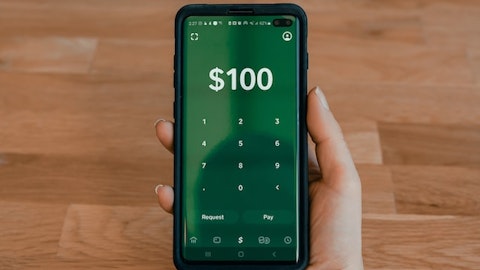However, Woori Financial Group has proactively reexamine the group’s risk factors and strengthened its loss absorbing capacity at an early stage, thereby securing sufficient capacity for future risk management. Going forward, the group based on such risk management capabilities will continue to focus on managing high risk assets such as real estate PF and vulnerable borrower loans. Let me now elaborate on capital adequacy indicators. As of the end of 2023, the group’s common stock ratio is expected to be 11.9%, an increase of 0.3 percentage points from the previous year end. While additional provisions to expand loss absorption capacity and cooperative finance programs resulted in decline in profitability, the aforementioned result was possible due to our strengthened efforts to enhance capital adequacy, including active risk weighted asset management.
As the supervisory authorities measures to strengthen capital regulations such as the imposition of stress buffer capital are scheduled to be implemented in the future, the Group plans to manage its capital ratio at a level above the CET1 ratio of 12%, and we will further strive to improve our capital adequacy through solid financial performance and thorough risk management. Following the update on the financial performance, I would like to take this opportunity to present the Group’s new capital management policy and shareholder return policy. Please refer to Page 6. For your reference, this material was prepared based on what was discussed at the Board of Directors meeting. At last year’s earning call, the Group announced that based on a CET1 ratio of 12%, the total return to shareholders, including dividends and share buyback would be implemented within 30%.
In addition, the Group noted that when the common stock ratio reaches 12%, it will review its mid to long-term shareholder return policy with a view to expanding shareholder return. Last year, Woori Financial Group for the first time since its establishment as a holding company, paid quarterly dividends of KRW181 per share in the second and third quarters and also engaged in the buyback and cancellation of treasury shares worth KRW100 billion. The Group also signed a stock transfer framework agreement with KDIC and resolved related overhang risks. Considering the closing dividend of KRW641 per share announced today, the Group’s dividend payout ratio for 2023 is 29.7% and the total shareholder return is 33.7%. Furthermore, in order to improve the dividend process, the group for its 2023 year-end dividend has set the dividend reference date to February 29 after the dividend amount has been determined, thereby enhancing the predictability of dividends.
This year, in light of strengthened capital regulations and expanded loss absorption capacity, we reset the common stock ratio target to 13%. We will maintain the shareholder return method of combining dividends and treasury stock buyback and cancellation, but will implement more active shareholder return for each common stock ratio tier, and such approach feeds into our reestablished shareholder return policy that focuses on gradually increasing dividend per share and total shareholder return. Considering our current capital ratio, when the group’s CET1 ratio is within 13%, we will gradually increase the TSR or total shareholder return to 35%, and when the CET1 is above 13%, we will pursue a total shareholder return of 35% or more. However, the mid-to-long term TSR target is set at 50%.
In particular for the group’s capital management, we plan to actively manage risk weighted assets by enhancing our portfolio with a focus on low risk, high return quality prime assets and selective asset growth. Based on RoRWA. The recently discussed corporate value program aimed at resolving the undervaluation of the stock market is also expected to greatly contribute to this trend of expanding shareholder return and provide momentum for valuation recovery of value stocks that are undervalued in the market. This year, Woori Financial Group, based on its upgraded profit generating capability and stabilized asset soundness, plans to initiate a full scale earnings turnaround also, so that the profits generated in this way can be more faithfully returned to shareholders.
We will endeavor to implement various shareholder value enhancement measures. By achieving our management plan targets, we will restore our 2024 dividend per share to the level at or above 2022 [ph] levels and continue to further increase in the future. The plan to purchase the 1.2% stake in the company held by KDIC is also currently under discussion to be implemented as soon as possible. And given the current stock price level, this is KRW130 billion, an increase of more than 30% year-on-year in share buyback, and the total amount is to be canceled after the purchase. We will announce the decision as soon as it is finalized. In 2023, the group reviewed its vulnerabilities and focused its efforts to proactively secure the ability to respond to future economic conditions.
These proactive measures resulted in a decline in net income, but this is only temporary. This year, based on our recovered performance, we will continue to improve shareholder value as described earlier and fulfill our social responsibility as a financial institution. Thank you. Next, the group’s CRO, Mr. Park Jang-Geun, will elaborate on the status of the group’s risk management.
Park Jang-Geun: Good afternoon. I am the CRO of Woori Financial Group. I am Park Jang-Geun. Let me present the risk management section in Woori Financial Group’s 2023 annual business performance, please refer to Page 7. First is delinquency rate trend. In the case of Woori Bank, it was 0.26% which was an increase of 0.05 percentage point year-on-year and Woori Card was 1.22% which was up 0.02 percentage point year-on-year. And we’re seeing high interest rates and market instability is continuing on and therefore delinquency rate did increase slightly. However, if you refer to the increase, it is at the lowest level in each relative industry. And let me now move on to the proactive risk management. As you can see here in this graph, in 2023, the annual credit cost was KRW1,881 billion.





